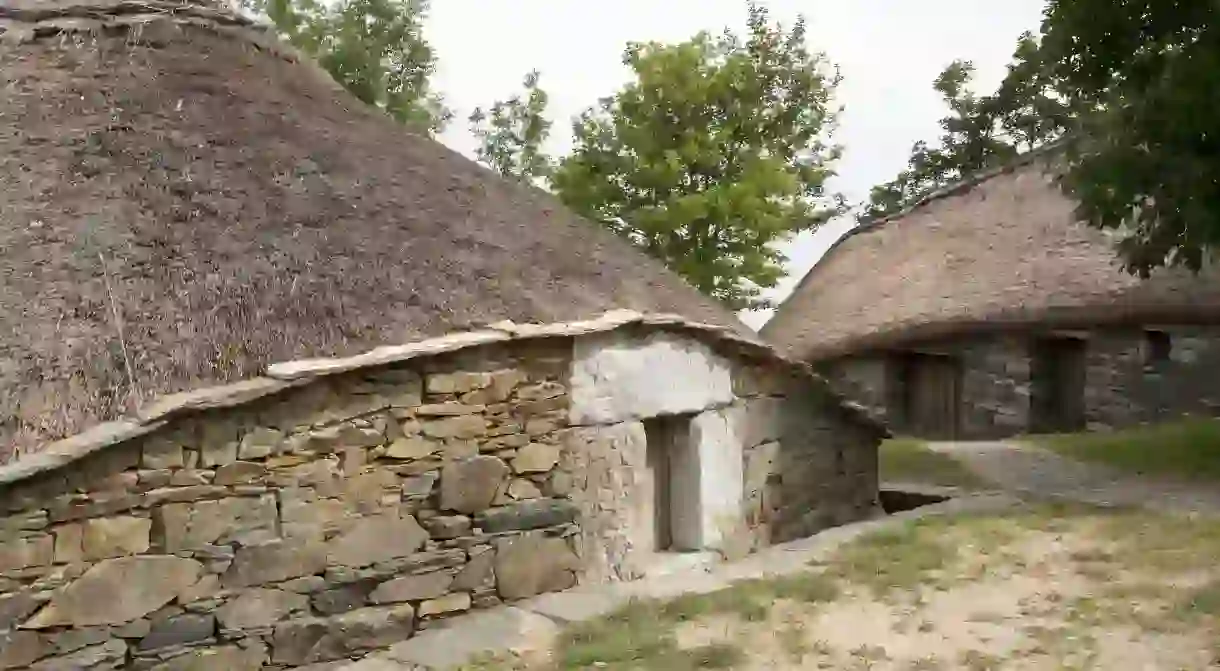O Cebreiro: This Spanish Village Will Make You Feel Like You’ve Stepped Into ‘The Flintstones’

The small village of O Cebreiro is located just over the border from Castilla y León, in the region of Galicia. It sits on a high ridge looking out across the mountains; filled with ancient stone roundhouses and cobbled streets, it looks as if it belongs in another time and place completely.

The village sits at the final stretch of the Camino de Santiago, just 150km (93mi) from Santiago de Compostela, so it is mostly filled with locals and weary-looking pilgrims. Crisscrossed by cobblestone streets and dotted with thatched stone roundhouses, you can almost imagine Fred and Wilma Flintstone stepping out and inviting you in for a brontosaurus burger or a dino dog. These ancient houses are known as pallozas, and their history can be traced back over 1,500 years to the Celtic times.

History
Although the pallozas started to appear over 1,000 years ago, these rustic round stone huts were actually inhabited by villagers all the way up until the 1960s. O Cebreiro became prominent in the medieval times, however, after the discovery of the tomb of the Apostle James, or Santiago as he is known in Spanish. The village then became a part of the pilgrimage route to the city of Santiago de Compostela.

The legend of the Holy Grail of Galicia
It is here where many pilgrims flock to discover the village that experienced the Miracle of the Eucharist, or the legend of the Holy Grail of Galicia, for themselves. It is widely believed that around the year 1300, a man named Juan Santin was such a devout Christian that he never missed mass for anything. One day, a fierce storm ravaged the village, and the priest assumed that no one would turn up. When Juan entered, the priest was surprised and made fun of him by saying that it was not worth braving the storm just for a little bread and wine. The legend continues that to punish the priest for his words and lack of faith, God turned the bread and wine into real flesh and blood.

In 1486, the Catholic Kings returned through the village after their visit to Santiago de Compostela, and after hearing the story, they gave the church two crystal flasks in which to keep the relics.

Modern-day O Cebreiro
Today there are nine pallozas left, and some of them are open to visitors to enter. A couple of them are museums, where you can see exactly how people used to live. They’re filled with ancient tools, cooking pots and fireplaces, as well as descriptions of life in that era. One of the pallozas is even a guesthouse and is available to rent, so you can play out your own Flintstones fantasy, complete with Pebbles and Bam Bam in tow.

In O Cebreiro, all roads lead to the village church – a must-visit pre-Romanesque church where the legendary Galician Holy Grail is housed. And if you’re feeling peckish, there are a couple of rustic taverns where you can enjoy typical Galician dishes such as caldo gallego (a stew made from cabbage, potatoes, white beans, beef, sausage and chorizo) and huge (T-Rex T-bone-style) steaks, bigger than your face. The village’s two restaurants – Venta Celta and Taberna Moreno – both serve excellent versions of both.

So, whether you’re just stopping off on a northern Spain road trip, walking the Camino de Santiago or going in search of the Holy Grail, you’re sure to have a ‘yabba dabba doo time’ in this picturesque ancient village.














